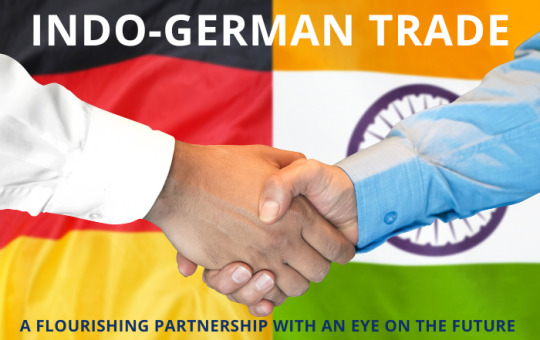#india market entry
Text
Apple To Invest More In India

As per undisclosed sources familiar with the matter, Apple Inc. is reportedly revamping the management of its international businesses to place a larger emphasis on India, reflecting the country's growing importance in the company's overall strategy. This move marks a significant milestone as India is set to become its own sales region at Apple for the first time, signaling the surging demand for Apple's products in the region. As a result, India is expected to gain greater prominence and visibility within the company.
The decision to focus on India could be a strategic move by Apple, given that India is one of the fastest-growing smartphone markets in the world. By prioritizing India, Apple may be seeking to gain a larger market share in the region, which could help the company offset slowing growth in other markets. The company's recent launch of an online store in India is further evidence of its commitment to expanding its presence in the country. Last quarter, despite a 5% dip in total sales, Apple achieved record revenue in India. The tech giant has set up an online store to cater to the region and plans to open its first retail stores there later this year. During the last earnings call, Apple CEO Tim Cook highlighted the company's significant emphasis on the Indian market and compared its current state to its early years in China. He mentioned how Apple is leveraging its learnings from China to scale in India. China is Apple's largest sales region after the Americas and Europe, generating around $75 billion in revenue per year. Apart from boosting Apple's sales, India is also becoming increasingly critical to the company's product development. Key suppliers are shifting to the region, and Apple is partnering with manufacturing giant Hon Hai Precision Industry Co. (also known as Foxconn) to establish new iPhone production facilities in India, according to Bloomberg News. Apple has been expanding its focus on the Indian market in recent years, and the company has been making efforts to improve its sales operations in the country. In 2020, Apple launched an online store in India, which allowed the company to sell its products directly to consumers in the country for the first time. This move was seen as a significant step for Apple, as India is one of the world's fastest-growing smartphone markets. If Apple is restructuring its international sales operations to put a more significant focus on India, it suggests that the company sees significant growth potential in the Indian market. Apple may be looking to increase its market share in India by focusing on pricing, localizing products and services, and building relationships with key partners in the country. It remains to be seen how Apple's restructuring will affect the company's operations in other regions. However, this move is undoubtedly a positive sign for India's tech industry, as it shows that major global players are taking note of the country's potential as a growth market.
Fox&Angel is an open strategy consulting ecosystem, put together by a top-line core team of industry experts, studded with illustrious success stories, learnings, and growth. Committed to curate bespoke business & strategy solutions for each of your challenges, we literally handpick consultants from across the globe and industries who fit the role best and help you on your path to success.
This post was originally published on: Foxnangel
#Apple India#Business expansion#business growth#FDI in India#Foreign Direct Investment#FoxNAngel#India market entry#Indian growing economy#Invest in India#Investment#strategy consulting
2 notes
·
View notes
Text
Brand & Marketing Consultancy in India

Strategic planning is planning for long periods of time for effective and efficient attainment of organizational goals.
Want to know more about strategic planning?
Get in touch with us right now: https://arguscmpo.com/
#brandconsultancy#marketingconsultant#socialmedia#marketing#socialmediamarketing#digitalmarketing#branding#business#marketingdigital#seo#contentmarketing#advertising#onlinemarketing#facebook marketing#india market entry#business consultant#arguscmpo#India
9 notes
·
View notes
Text
Streamline. Outsource. Succeed: Interactive Outsourcing Solutions to India
Streamline your operations interactively by outsourcing to India. Explore service offerings, engage with cost-effective solutions, and elevate your efficiency with intuitive clicks. Let your digital transformation redefine business success.
Transform your operations interactively! Outsource to India for streamlined business solutions. Connect now to experience the power of interactive outsourcing.
Visit- Fox&Angel- Your Global Expansion Partner
#foxnangel#business expansion#fdi in india#foreign investments#investment opportunities#foreign direct investment#india market entry#invest in india#investment options#indian market
0 notes
Photo

Foreign company registration in India - Do you wish to setting up Branch Office in India? Our team of experts will ensure a smooth process flow in opening the Branch Office of Foreign Entities in India. Email us at [email protected] or visit www.knmindia.com for more information.
#foreign company registration in India#foreign company registration#company registration#india market entry#india market entry strategy#investment in india#business in india#investment#business#registration#foreign company#finance#growth#solution#advisory solutions#knm#knm india
0 notes
Text
Indo-German Trade: A Flourishing Partnership with an Eye on the Future
For centuries, India and Germany have shared a rich history of trade. This enduring partnership has gained new momentum in recent years, making Germany India's largest trading partner in Europe. But the relationship goes beyond mere exchange. Let's delve deeper into this dynamic collaboration.

Expert Opinions: Bridging the Perception Gap
While India boasts a vast market and skilled workforce, some German companies may hold initial reservations due to a perceived lack of transparency or infrastructure concerns. Industry leaders emphasize the importance of on-ground presence and cultural understanding. Here's what the experts say:
Mr. Sanjay Kapoor, CEO of LEMKEN India Agro Equipment Pvt Ltd: "Our success in India hinges on building trust and long-term relationships. Partnering with local firms has been invaluable in navigating regulations and market nuances."
Make in India and Atmanirbhar Bharat: A Shared Vision
India's initiatives like Make in India and Atmanirbhar Bharat (Self-Reliant India) resonate with Germany's focus on innovation and technological prowess. Collaboration in these areas presents a win-win situation:
Energy Sector: Siemens, a German powerhouse, has been instrumental in India's electrification journey.
Artificial Intelligence and Automation: German companies like Bosch are actively involved in skilling India's workforce for the future of Industry 4.0.
Advanced Engineering & Manufacturing: Indo-German collaborations are fostering advancements in areas like machine tools and robotics.
Renewable Energy: Germany's expertise in solar and wind power is crucial for India's clean energy goals. This is evident in recent investments by companies like Senvion.
Semiconductor Industry: With India's ambitious semiconductor mission, there's immense potential for German expertise in chip design and fabrication.
The Maier Vidorno Altios Advantage: Bridging the Gap for Two Decades
Companies like Maier Vidorno Altios, a brainchild of Klaus Maier, exemplify the crucial role of bridge-builders. Established over two decades ago, MVA has facilitated successful market entries for numerous German companies in India, demonstrating the power of cultural understanding and strategic partnerships.
The Road Ahead: A Future Fueled by Collaboration
The Indo-German trade partnership is a testament to the power of mutual understanding and shared goals. By leveraging Make in India, Atmanirbhar Bharat, and the expertise of industry leaders from both nations, this collaboration is poised to reach even greater heights in the years to come. As India continues its economic ascent, Germany remains a vital partner in its journey towards a self-reliant and technologically advanced future.
1 note
·
View note
Text
Market Entry India and Route to Market India - Spirits and Rituals
Introduction to Market Entry in India
Entering the Indian market offers immense opportunities for businesses worldwide. With its vast consumer base and growing economy, India presents an attractive destination for expansion. However, navigating the complexities of this diverse market requires a well-thought-out strategy.
Market Research and Analysis
Before venturing into India, thorough market research is essential. Understanding the demographics, consumer behavior, and competition landscape is crucial for success.
Choosing the Right Market Entry Strategy
Businesses can opt for various market entry strategies such as direct exporting, joint ventures, licensing, franchising, or establishing a subsidiary. Each approach has its advantages and challenges.
Understanding Indian Regulations and Legalities
Compliance with Indian regulations is vital for business operations. Familiarizing oneself with corporate laws, taxation policies, and intellectual property rights is essential to avoid legal issues.
Setting Up Distribution Channels
Establishing efficient distribution channels is key to reaching Indian consumers effectively. Building partnerships with local distributors can help penetrate the market more efficiently.
Cultural Considerations in Marketing
India's diverse culture requires businesses to tailor their marketing strategies accordingly. Language, customs, and traditions play a significant role in consumer perceptions.
Importance of Localizing Marketing Strategies
Adapting marketing campaigns to local preferences is essential for connecting with Indian consumers. Leveraging social media and digital platforms can enhance brand visibility.
Navigating Logistics and Supply Chain Management
Efficient logistics and supply chain management are critical for timely delivery of goods. Understanding India's transportation infrastructure and investing in warehousing facilities is vital.
Overcoming Language Barriers
Language barriers can hinder effective communication. Employing translation services and hiring bilingual staff can bridge the gap and facilitate smoother operations.
Building Relationships with Stakeholders
Establishing relationships with government agencies and local businesses is essential for navigating regulatory processes and gaining market insights.
Risk Management and Contingency Planning
Businesses must assess potential risks such as political instability and economic fluctuations. Developing contingency plans can mitigate adverse effects on operations.
Assessing Market Entry Success
Monitoring key performance indicators allows businesses to evaluate the success of their market entry strategies. Flexibility and adaptability are crucial for making necessary adjustments.
Case Studies of Successful Market Entries in India
Studying successful market entry cases provides valuable insights for businesses planning to enter India. Learning from past experiences can help avoid common pitfalls.
Conclusion
Entering the Indian market requires careful planning and execution. By understanding the market dynamics, complying with regulations, and adapting to cultural nuances, businesses can pave a successful route to market in India.
FAQs
What are the main challenges of entering the Indian market?
Entering the Indian market poses challenges such as cultural differences, regulatory complexities, and intense competition.
How can cultural differences affect market entry strategies in India?
Cultural differences influence consumer preferences, communication styles, and purchasing behavior, necessitating tailored marketing approaches.
What are the advantages of forming a joint venture in India?
Forming a joint venture allows businesses to leverage local expertise, share risks, and gain access to established distribution networks.
How important is it to comply with Indian regulations?
Compliance with Indian regulations is crucial for avoiding legal complications, maintaining business continuity, and fostering trust with stakeholders.
What role does market research play in market entry strategies?
Market research helps businesses understand the Indian market landscape, identify opportunities and threats, and formulate effective entry strategies.

0 notes
Text

Are you looking for a business staffing service in India or Singapore? We offer staffing solutions for businesses, to help you identify the best candidates for the job. Grow Asia provides tips and tricks for your business expansion in Singapore. That helps how to set up your business growth and manage trade, financing, and staffing. Visit us: www.growasia.sg
#Remote Customer Service India#Business Development Service Asia#Market Entry Service Asia#EOR services India
0 notes
Text

Are you planning to expand your business into the lucrative Indian market? Look no further than Ahlawat & Associates! With years of experience in assisting businesses with their India market entry consulting, our team of expert consultants can provide you with comprehensive guidance and support. From market research and competitor analysis to legal and regulatory compliance, we have the expertise to help you navigate the complexities of the Indian market. Trust Ahlawat & Associates to develop a tailored entry strategy that will maximize your chances of success. Take the first step towards a successful India entry by contacting us today.
0 notes
Text
Soft Drink Market in India Poised for Significant Growth, According to Varun Beverages

Varun Beverages, a leading PepsiCo bottler in India, has recently announced that the soft drink market in India is expected to see significant growth in the coming years. This projection is based on the increasing demand for soft drinks and the growing popularity of non-alcoholic beverages in the country.
According to a report by the Indian Soft Drinks Market, the soft drink industry in India is expected to grow at a CAGR of 7.5% during the period 2021-2026. This growth is attributed to the rising disposable income of the Indian population, the increasing urbanization, and the changing lifestyle patterns of the younger generation.
Varun Beverages, which is one of the largest franchisees of PepsiCo in the world, operates in 27 countries and produces a range of carbonated and non-carbonated beverages. The company has witnessed a surge in demand for its products in India, especially in the non-alcoholic segment.
In addition, Varun Beverages has also been expanding its production capacity in India, with the recent acquisition of PepsiCo's bottling plants in six states. The company is expected to increase its production capacity to meet the country's growing demand for soft drinks.
The soft drink market in India is dominated by major players such as Coca-Cola, PepsiCo, and Parle Agro, who collectively hold more than 90% of the market share. However, the market is also witnessing the entry of new players, who are introducing innovative products to cater to the changing preferences of consumers.
Overall, the Indian market is expected to grow rapidly in the coming years, driven by the growing demand for non-alcoholic beverages and the expanding middle-class population. As one of the leading players in the industry, Varun Beverages is well-positioned to capitalize on this growth and emerge as a major player in the Indian soft drink market.
Fox&Angel is an open strategy consulting ecosystem, put together by a top-line core team of industry experts, studded with illustrious success stories, learnings, and growth. Committed to curate bespoke business & strategy solutions for each of your challenges, we literally handpick consultants from across the globe and industries that fit the role best and help you on your path to success.
This post was originally published on: Foxnangel
#Business expansion#business growth#FDI in India#Foreign Direct Investment#Grow with India#india market entry#Indian growing economy#Indian market#Invest in India#PepsiCo#Soft drink market
0 notes
Text
1 note
·
View note
Link
If Data drives your business, then let it be the real data. Update your existing database with 100% hand-curated data having >99% accuracy with lessburn.
#Business Information Services#Business Support Services#Digital Marketing Company In India#Online Market Research#Digital Marketing Agency#Digital Marketing Agency in India#branding agency#designing agency#Search Engine Optimization#Business Information Sourcing#UI/UX#Mob & Web Application Development company#Web Research#Market Research#Data Entry#lessburn
0 notes
Text
Innovate. Invest. Interact: Engaging in India’s Startup Revolution
Join the interactive frontier of Indian startups. Explore disruptive innovations, engage with visionary founders, and become a part of the startup revolution with every click. Let your digital journey catalyze entrepreneurial dreams.
Join the startup revolution interactively! Explore investment opportunities in India’s dynamic startup ecosystem. Connect with us to fuel your interactive investment adventure.
Visit- Fox&Angel- Your Global Expansion Partner
#business expansion#fdi in india#foxnangel#foreign investments#investment opportunities#invest in india#foreign direct investment#investment options#india market entry
0 notes
Text
Because most medicines were produced from [...] plants [...] these early “pharmaceutical monopolies” required full control of the production and trade of a species. Russia successfully managed the rhubarb trade in the seventeenth and eighteenth centuries, while Spain controlled the distribution [...] from Spanish America, mainly cinchona from Peru, in the same period. “True” cinnamon grew only on Sri Lanka, so whoever controlled the island could dominate the cinnamon trade. The Portuguese were the first to create a monopoly on the cinnamon trade there in the early seventeenth century. That monopoly was later optimized by the Dutch in the late eighteenth century [...].
“True” should indeed be in quotation marks here - the term reflects the historically contingent tastes of Europeans, rather than any botanical category [...]. The rarity of cinnamon in the early modern period made it one of the most coveted spices of that era, and European countries without direct access to the cinnamon trade tried to imitate, substitute, steal, smuggle, or transplant the “true” product from Sri Lanka. [...]
---
In the early modern period, cinnamon was also important both as an exotic commodity and as an important therapeutic substance. The Dutch East India Company (VOC), which controlled Sri Lanka between 1658 and 1796, was well aware of this. The VOC vigorously exploited the Salagama - [...] specialized Sri Lankan cinnamon peelers - to supply enough cinnamon, which for a long time was gathered from forests. Only after the peelers rebelled, leading to a war that lasted between 1760 and 1766, did the company revise its production policy.
Experiments with “cinnamon gardens” (kaneeltuinen in Dutch) led to enormous successes, and the company eventually grew millions of cinnamon trees on plantations in the final decades of the eighteenth century. Meanwhile, competitors of the Dutch had come up with their own solutions [...]: Spain had started growing other Cinnamomum species on plantations in the Philippines, while France and Britain succeeded in transplanting cinnamon to islands in the Caribbean. But the Dutch monopoly was not simply threatened by outside competition. Smuggling, by peelers or VOC personnel, was strictly forbidden and severely punished. [...]
---
Hendrik Adriaan van Rheede tot Drakenstein (1636–1691) was the VOC administrator on India’s Malabar Coast when he started experimenting with cinnamon oil in the 1670s.
He concluded that the oil, which he extracted from the roots of local cinnamon trees, was of better quality than oil from cinnamon trees on Sri Lanka. Van Rheede reported these results in his entry on cinnamon in volume 1 of the Hortus Indicus Malabaricus, the twelve-volume book that was produced by a team of local and European scholars, and supervised by Van Rheede himself.
Van Rheede’s assessment of cinnamon - in fact, the very publication of a multi-volume work about the flora of Malabar - infuriated the governor of Sri Lanka, Rijckloff van Goens, who had secured the cinnamon monopoly of Sri Lanka for the Dutch. Van Goens insisted that Van Rheede stop his medical experiments, claiming that the monopoly was at risk if the cinnamon trade was extended beyond the island of Sri Lanka.
But Van Goens was not so much concerned about the therapeutic efficacy of cinnamon from either of the two regions. He was motivated by an imperial agenda and regarded the natural products of Sri Lanka as superior to anything similar in the region.
The experiments of Van Rheede, who was his former protégé, threatened not so much the botanical quality of the product, or the commercial interests of the Dutch East India Company, but rather the central position of Sri Lanka in the Dutch colonial system and the position of Van Goens as the representative of that system.
---
Even when Sri Lanka still only produced cinnamon that grew in the wild, the Dutch harvested enough to supply an international market and were able to dictate the availability and price level throughout the world. The monopoly, whether defined in commercial or pharmaceutical terms, was not easily put at risk by efforts like Van Rheede’s. Those involved in the early modern cinnamon trade were motivated by various reasons to defend or undermine the central position of Sri Lankan cinnamon: botanical, medical, commercial, or imperial. These motives often overlapped.
---
All text above by: Wouter Klein. “Plant of the Month: Cinnamon.” JSTOR Daily. 17 February 2021. “Plant of the Month” series is part of the Plant Humanities Initiative, a partnership of Dumbarton Oaks and JSTOR Labs. [Bold emphasis and some paragraph breaks/contractions added by me. Presented here for commentary, teaching, criticism purposes.]
150 notes
·
View notes
Photo

India market entry strategy - Doing business in India certainly offers long-term benefits, but we are aware of market entrance barriers for international enterprises or investment organizations. At KNM, we have overcome these obstacles by building a smart India market entry strategy with verifiable results for our prestigious prestigious clientele across the globe.
#india market entry strategy#india market entry#business#business in india#investment#investment in india#financial solutions legal advisory services#financial advisory services#transaction advisory services#finance money
0 notes
Text
Bestiaryposting Results: Fekthrud
Happy Liminalmas, everybody! We've got fewer results than usual this week, which I would speculatively credit to a variety of factors:
Weird liminal space at the end of the year
It's Another Bird
Not a ton of fun details
It's easy to guess what the animal is
Anyhow, if you want to see the context for this, the page where I collect these posts is here: https://maniculum.tumblr.com/bestiaryposting. (Hmm -- looks like I forgot to update the page last time around. Maybe that's part of the issue too.) And the entry that people are working from is here:
So, our results, roughly chronologically:

@silverhart-makes-art (link to post here) has given us these very well-rendered pheasant-like creatures. They've given their Fekthrud a head like a Pachycephalosaurus*, which I think is a great way to interpret the whole business about the hard skull; like, that had not occurred to me when reading the entry, but now that I see it, it makes perfect sense. In general these are excellent birds here, and you can see some brief notes on design decisions in the post linked above. I like the justification that a ground bird makes the most sense if they're adapted for falling on rocks and/or running into stuff head-first.
*Proud of myself for spelling "pachycephalosaurus" correctly without looking -- being a former Dinosaur Kid pays weird niche dividends.

@coolest-capybara (link to post here) continues to impress with her medieval-style drawings. (And to provide alt-text, thank you.) I really like how colorful and generally very pretty she's made her Fekthrud. I also appreciate the decision to show them attacking someone who is trying to take that "iron rod" advice. Very correct response -- get 'em, birds. If you click the link to her post above, you can see some discussion of design decisions.

@cheapsweets (link to post here) has made the excellent decision to pose their Fekthrud like it's giving a speech. (And the generous decision to provide alt text, thank you.) This bird absolutely looks like it's saying "Ave!" -- I can clearly imagine it addressing the Roman Senate. Cheapsweets has also taken inspiration from Pachycephalosaurus, and I love that two of our artists got there independently -- like I said, it's an idea that makes perfect sense once you think of it. The post linked above contains a detailed discussion both of their design decision and of their artistic process, including an image of their tools and materials. Go read it.

@pomrania (link to post here) has decided that, rather than make the actual bone of the Fekthrud's skull thick. it should have a thick cushion of feathers. I don't know much about birds, but I feel like that makes sense: thick and heavy bone might be a weight issue if this thing is supposed to fly, so a feather cushion might be more practical protection. The goofy look with the tongue lolling out is also quite charming. In the post linked above, you can see some brief notes on design and process.
And... that's it for this week. Like I said, not a lot of people did this one. So, the Aberdeen Bestiary version:

Yeah, so, of course this one is the parrot.
The medieval illustrator is actually pretty close, I think. And they've used one of my favorite styles of Generic Medieval Plant, even though it doesn't look like it can support the parrot's weight.
The entry is broadly accurate, except for the bit about the skull and the iron rod. There are parrots in India with the coloration described -- multiple species, actually, as far as I can tell. They do talk, though I can't speak to the tongue anatomy thing.
Moreover, if you were a parrot trainer in India who wanted to impress medieval Europeans with your talking birds -- maybe so you can establish demand for them in a new market -- of course the first thing you'd do is train your parrots to greet people in Latin and Greek. Latin is the obvious catch-all, and Greek is the majority language in Constantinople, which is the trade hub you want to target. So I bet all the parrots from India that medieval Europeans saw really did say "Ave!" and "Kere!" (And we do know that people in the Byzantine Empire had pet parrots, so I guess it worked.)
I've never heard the thing about parrots having a hard skull and beak. I kind of wonder if, at some point, someone saw a parrot being struck by its owner (or the aforementioned hypothetical merchant) and asked if it was really necessary to beat the poor bird like that -- and got a line like "oh, they have really hard skulls, it doesn't hurt them as much as you think"... and then that just stuck.
Anyway, that's it for this week. Hope y'all are enjoying Birds because you're getting another one next week.
49 notes
·
View notes
Text
The Sign of Four: The End of the Islander
Mediæval is an archaic spelling of medieval, using the æ letter that is rare in English, but far more common in Danish, Norwegian and Icelandic, for example.
Ceylon was the name used for what is now Sri Lanka until 1972, when that country (which become independent in 1948) become a Republic. Today, the name only really remains in the country for Ceylon tea, apparently for marketing reasons.
There has been a police force dedicated to the Thames since 1798, being founded as the privately funded Marine Police to tackle the high volume of cargo theft from ships there. Two years later, the government set up the Thames River Police to replace the successful force. The Metropolitan Police took it over in 1839 and made it the Thames Division, it now being called the Marine Policing Unit. Historically, they also did search and rescue, today done by the RNLI.
They had just acquired their first steam launches by 1888, historically relying on rowing boats that had proved inadequate in an 1878 two-ship collision that had killed 600 to 700 people.
Gravesend is on the south bank of the Thames, twenty-one miles from Charing Cross. It was the first port of entry into London for a long time, but the opening of Tilbury Docks on the other side of the river took much of its traffic. The pilot station for the Port of London remains there, along with a RNLI lifeboat station.
There was also a ferry from Gravesend to Tilbury until March 2024, when it stopped due to lack of funding from the 'bankrupt' Thurrock Council, despite being popular.
Pocahontas is also buried in Gravesend.
The Downs is a ship anchorage off the port of Deal in Kent; ships would - and still do - anchor there to protect themselves from strong southerly or westerly winds (as the coast blocked them) or if waiting for suitable winds to head elsewhere. Indeed, the port town grew up to deal (pun intended) with their needs during their says.
There would be six bridges east of Westminster Bridge on the Thames at this time; Tower Bridge, opened in 1886, would be the easternmost crossing point that a pedestrian or carriage could use at this point. The Thames Tunnel was by now a railway tunnel. Those to the east of that were reliant on ferries until 1897, when the western part of the Blackwall Tunnel opened, in a few years becoming the bottleneck it still is to this day.
St Paul's Cathedral, at 111m high, was the tallest building in London from 1710 until 1939 when Battersea Power Station was completed at two metres taller. . Today, there are still restrictions on building new skyscrapers in London to ensure the catherdal can still be viewed.
The Tower of London had been a tourist attraction since at least the Elizabethean period; it was getting over 500,000 visitors a year by the end of the century, but still retained some non-tourist uses.
The Pool of London is the bit of the river from London Bridge to Limehouse - it was the site of the original port until the Docklands were built to deal with massive overcrowding. The maritime industry here effectively collapsed along with the rest of the docks in the 1960s, but this area hasn't seen as much regeneration as parts further east.
The West India Docks were three large docks and associated buildings built at the beginning of the 19th century (1800 to 1802) to deal with trade to/from the British West Indies, to wit the sugar produced by the slave labour in the plantations there; Robert Milligan, its architect, was a slave trader who was unhappy about the delays and theft of his goods at the wharves, so wanted a more secure facility. Closed in 1980, it was converted into the Canary Wharf development, with the famous Underground station built in the former middle dock.
Now I have mistaken a Newfoundland dog for a coat-wearing homeless person in the dark myself - they are very big dogs. However, this has to be taken in the context of the rest of the description of Tonga.
Barking Level is where the River Roding enters the Thames. It is a largely industrial area today.
Plumstead Marshes were an area of low-lying soggy ground that was used by the Royal Arsenal (see "The Bruce-Partington Plans") as a testing range; no human inhabitants (since Roman times, when the water levels were lower) and the soft ground could absorb explosions better. They were drained in the 1960s and most of the area become the new community of Thamesmead; one of those "futuristic estates" that instead became crime-ridden due to bad planning and lack of amenities, which have not yet been fully corrected.
A slightly graphic (including a nasty facial/eye injury) discussion of the problems of recovering bodies from the Thames can be found in this February 2024 news article on the search for a chemical attacker's body: https://news.sky.com/story/the-traumatising-search-for-dead-bodies-in-the-thames-and-why-dozens-are-found-every-year-13071612
7 notes
·
View notes